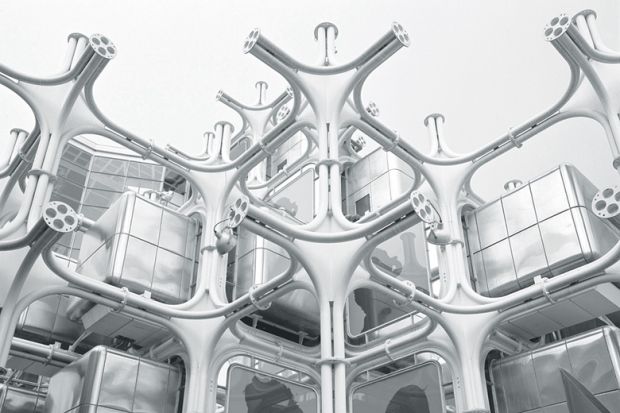In the field of hospital architecture, the idea of obsolescence is crucial. New hospitals are often renovated within months of opening, and older ones hurriedly abandoned when an expert declares them obsolete. I can’t count the number of times I’ve heard hospital administrators compare their current buildings to outdated cars in order to justify new construction. This analogy has always seemed absurd to me. How is a hospital like a car?
In his splendid new book Obsolescence, architectural historian Daniel Abramson provides an explanation. In six beautifully written chapters, he describes how over the past century the idea of obsolescence helped us to manage change by seeing buildings as disposable (like cars) or by refusing to do so (as I do). According to Abramson, obsolescence was invented about 1910 in order to facilitate capitalist expansion in the US, especially in the realm of commercial real estate and urban planning. The concept peaked globally by 1960, when some architects embraced the idea as liberating, even as the architectural waste horrified others. The 1960s resistance to the expendability of buildings, Abramson says, set the stage for our current fixation with sustainability. Like the obsolescence theorists who forecasted the lifespans of Chicago’s and New York’s buildings through depreciation, today’s green architects and planners also justify their designs through measurable performance, but now the yardstick is energy consumption.
What I particularly like about this book is that Abramson uses design as evidence to read society’s responses to the notion of obsolescence, rather than as mere illustration. And the resulting narrative is one of the most coherent and powerful explanations I’ve ever read of the seemingly disparate architectural movements of the past century: interwar conservatism, Brutalism, historic preservation and Post-Modernism.
Chapters 4 and 5, the heart of the book, look at the two opposing camps in the 1960s. On one side, a whole slew of architects and theorists gave up on the promise of longevity, and some of the greatest hits of the post-war era – the Salk Institute in California, the Pompidou Centre in Paris, Berlin’s New National Gallery, Japan’s megastructures – are products of this camp. The naysayers on the other side, argues Abramson, favoured vernacularism, adaptive reuse, Brutalism, Post-Modernism and even deconstructivism. These architectural movements of the late 20th century are often taught in isolation or even in opposition to each other. Abramson, however, sees them as advancing a common agenda. Grouping buildings by their political intentions, rather than by the way they look, is highly innovative, and it situates theorists such as Reyner Banham and Jane Jacobs vis-à-vis real buildings. This perspective is especially refreshing in the study of Modernism, a subject in architectural history preoccupied by building shapes.
The conclusion of Obsolescence is brilliant. Now superseded by sustainability, obsolescence is now itself obsolete. Abramson shows how the showpieces of the pro-obsolescence forces – buildings such as the Nakagin Capsule Tower in Tokyo – were never “swapped out as planned” and now sit ready for demolition. He points out how architects obsessed with LEED (Leadership in Energy and Environmental Design certification) are not so different from the realtors of 1910 with their focus on building scores. The ideas of obsolescence and sustainability, in the end, are just ways to justify change. They are belief systems that preoccupy an era, and then they disappear. Can somebody tell the hospital = car guys?
Annmarie Adams is professor of architecture, McGill University.
Obsolescence: An Architectural History
By Daniel M. Abramson
University of Chicago Press, 208pp, £24.50
ISBN 9780226313450 and 3597 (e-book)
Published 14 March 2016
POSTSCRIPT:
Print headline: Throwaway skyscrapers
Register to continue
Why register?
- Registration is free and only takes a moment
- Once registered, you can read 3 articles a month
- Sign up for our newsletter
Subscribe
Or subscribe for unlimited access to:
- Unlimited access to news, views, insights & reviews
- Digital editions
- Digital access to THE’s university and college rankings analysis
Already registered or a current subscriber?




